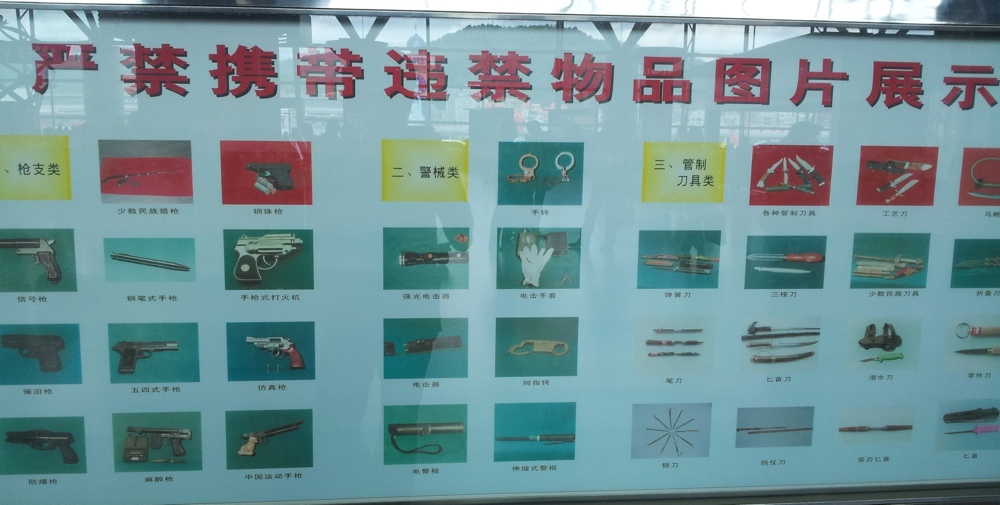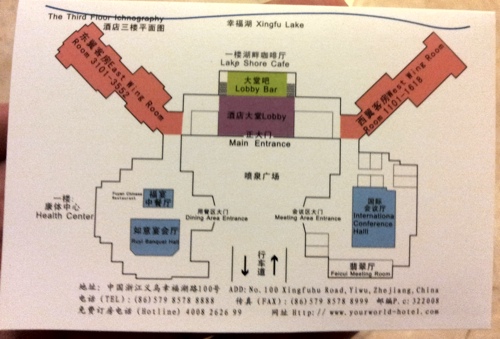 In a recent trip to Yiwu (not the place where one will find high-quality products!), I noticed several interesting things.
In a recent trip to Yiwu (not the place where one will find high-quality products!), I noticed several interesting things.
When an importer prepares a specifications sheet, I always recommend being ultra-specific (“include what tools to use, what tolerance to follow, and so on”). Same thing when preparing a list of potential defects: show a lot of photos, try to think of everything that can go wrong.
Here is a good example to follow: an airport board that shows a list of knives and guns that are forbidden!
Can you be more specific than that? Probably not.
Is it overkill? Unfortunately, not in China.
When I reached the hotel, I noticed they took extra precautions to ensure I understood their warning:
And the same hotel even showed a map of its premises at the back of the key envelope. Nice!
I think there is a lesson here for importers.
Bad communication with Chinese suppliers
- Send information at different times, in different formats.
- Use email, then Skype, then email again, then the phone…
- Count on the supplier to glue the pieces together (after all it’s their job, right?).
- Give feedback on pre-production samples, and use the samples you approved as “the standard”.
- Send pdf files or jpeg images that the supplier cannot modify.
Effective communication
Every time something changes in your specifications, update your master spec sheet and send a new version to the supplier.
- Make the last changes obvious (for example, in another color).
- Keep it in Word or Excel format, so that the salesperson can easily translate it and pass it to her colleagues in engineering or production.
- Use less text and more images whenever possible. For example, green “ticks” and red “crosses” are excellent symbols.
Any other tips?




Hotel should give you one more notice: be careful of hot weather, today is 40 degree!!
Yes, true! It was 39 that day.
Yes, spot-on, Renaud. “All my info was in the email…why did the problem happen”. So common. Similar to what you said above, here is what we see all the time. Client sends artwork…then a few days later they send the artwork again and say “there’s been a change to the artwork” – no mention of the what the change is, where the change is, is it major, will it have any other ramifications?
The funny thing is, in my opinion and from observations, buyers ARE more specific when dealing locally. For example when local distributors here in the States are buying from local suppliers. But for some odd reason, when it comes to handling overseas vendors with language barriers and great cultural differences, they actually become less vigilant on proactively looking for problems. I think the knowledge of language and cultural barriers and the fear of bad quality actually has more of an adverse reaction causing the buyer to digress in professionalism. Anyway, that my importer psychology 2 cents…
You are right, some buyers place less attention to details when it comes to their purchases in China. Maybe they think “it’s cheap and there will be problems anyway”. I don’t know where this dangerous trait comes from. Weird!